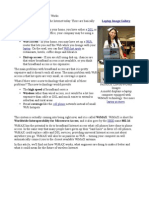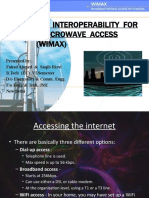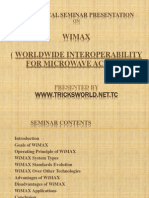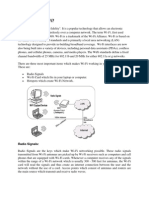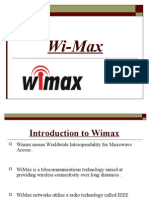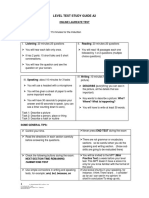0% found this document useful (0 votes)
106 views15 pagesWimax: Prepared by Rekha N S6 Cse
WiMAX is a wireless broadband technology that provides high-speed internet access over long distances, making it suitable for reaching rural areas not served by cables. It uses IEEE 802.16 standards and microwave transmission to connect to towers with ranges of up to 50 km. WiMAX has the potential to replace cable/DSL services and provide universal internet access anywhere through a portable receiver. It works by transmitting data from an internet-connected tower to receivers via non-line-of-sight microwave links, offering faster speeds than WiFi over greater distances for a potentially lower cost than other broadband options.
Uploaded by
Rekha NarainCopyright
© © All Rights Reserved
We take content rights seriously. If you suspect this is your content, claim it here.
Available Formats
Download as PPTX, PDF, TXT or read online on Scribd
0% found this document useful (0 votes)
106 views15 pagesWimax: Prepared by Rekha N S6 Cse
WiMAX is a wireless broadband technology that provides high-speed internet access over long distances, making it suitable for reaching rural areas not served by cables. It uses IEEE 802.16 standards and microwave transmission to connect to towers with ranges of up to 50 km. WiMAX has the potential to replace cable/DSL services and provide universal internet access anywhere through a portable receiver. It works by transmitting data from an internet-connected tower to receivers via non-line-of-sight microwave links, offering faster speeds than WiFi over greater distances for a potentially lower cost than other broadband options.
Uploaded by
Rekha NarainCopyright
© © All Rights Reserved
We take content rights seriously. If you suspect this is your content, claim it here.
Available Formats
Download as PPTX, PDF, TXT or read online on Scribd
/ 15
